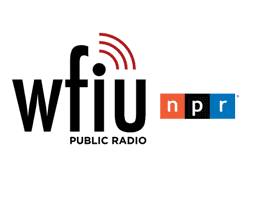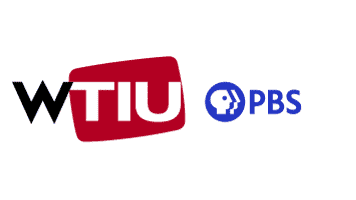WFIU Community Advisory Board Meeting
Via Zoom
Monday, January 4, 2021, 4:00 p.m.
Attending: Alain Barker, Sara Peterson, Sarah Taylor, Carolyn Calloway-Thomas, Judy Stewart, Abby Henkel, Lacy Hawkins, Adrian Starnes, Lauren Dexter Burns, Nathan Watson, Catherine Winkler, Miah Michaelsen. Staff: John Bailey, Brad Kimmel, Eva Zogorski, Aaron Cain.
Absent: Sharon Sung Andrews, Hilda Andres, Matt Pierce, Daren Redman, Quincy Robinson, Brent Molnar.
Alain Barker calls the meeting to order.
Welcome & Introductions
Alain Barker seeks motion to approve October 2020 minutes. Judy Stewart moves, Lacy Hawkins seconds. Motion passes.
Public Comment
No members of public are present to comment.
Board Composition
John Bailey notes that Sara Peterson, Daren Redman, and Lacy Hawkins are slated to rotate off in 2021, and five more in 2022 – including everyone but Abby who has served on board leadership. The CAB should be active in its recruiting efforts this year to ensure a handing-off of institutional knowledge. The nominations committee has forwarded some names for vetting; one of them, Samantha Johnson-Helms, the marketing director for the Terre Haute Symphony Orchestra, has been approached and has expressed interest. CAB votes unanimously to approve.
Introductions
General Manager Brad Kimmel
Joined Radio-TV Services at the end of November. Has a 30-year career in commercial and public broadcasting, most recently for seven years with WNIN in Evansville. Considers the chance to be executive director of WFIU and WTIU the best job opportunity in America and is looking forward to strategic planning with the staff this year and getting to know the CAB better. Each CAB member present offers a self-introduction.
Music Director Aaron Cain
Moved to the music director seat, replacing Joe Goetz, in December. Had been the Morning Edition host and producer of Profiles. Considers the change a return to roots – his undergraduate and graduate degrees are in music. He is looking forward to having a hand in the production of Harmonia and to picking up the mantel of maintaining ClassicalWorks, the service we syndicate nationwide.
CAB (Re)orientation and State of the Station and System Report – John Bailey
Membership
We entered 2020 expecting a slight downward dip for the year due to political donations, tax law changes meaning fewer gifts from IRAs and donor-advised funds, and economic uncertainty. And that was before Covid hit. First half of FY21: an estimated $392,000, up from the first half of each of the two previous years; we’re on pace to meet or exceed the FY goal, as we did in FY20. The one-day Giving Tuesday drive was a success, reaping some $25,000 (on pace with 2019) in addition to $20,000 in match money derived from unmet fall challenges. We stand at about 4,100 members (up from 3,979 last year); 40% are sustainers (up from 38% last year, with avg. monthly gift of $16.25). 2020 was a remarkable news year, of course; and, when the news is dramatic, radios are flipped on; and we positioned ourselves consistently as a vital community resource that people could rely on even when the rest of the world seemed to be shut down.
Corporate support
Fiscal 2020 saw more than $342,000 collected for Radio, more than four of the previous eight FYs. The goal for both stations in a year that was forecast to be down, and that was hobbled by staff turnover for seven months. February was all-time largest sales month, and with an all-new team.
Federal funding
In 2020, we enjoyed will be the first CPB hike in 10 years: it is forward-funded for FY22 to the tune of $465 million, up from the $445M at which it was level for close to a decade. FIU’s share is ca. $225,000. In August, the House-passed appropriations bill increased FY23 funding to $515M, with a maintenance of a $20M appropriation for public broadcasting interconnection; in November, the Senate countered with $465M, plus $20M for interconnection. Bottom line is that the appropriations outlook for public media seems to be on steady footing, with a modest increase for annual funding slated for at least the next couple of years.
State funding
Zeroed by Mitch Daniels, but has steadily worked its way back up in the Pence and Holcomb years; IPBS lobbies legislators and state execs with the help of lobbyists at events such as Statehouse Day. We will be requesting last year’s full appropriation of about $3.675M; that money is shared equitably among the 18 pub stations in the state; FIU’s share is about $55K. Our primary lobbyist, Mark Shublak, expects a reduction in the Governor’s budget by about 12%, but is coordinating efforts for this session to maintain an appropriation for IPBS stations through the Department of Education that is level with last year.
University funding
About 35% of Radio-TV’s revenue is a direct disbursement from IU, achieved in a competitive process involving annual presentation to the campus budget office; we’re toward the top of the Big 10 stations in licensee support, and lucky to have any support at all – comm licensees such as WFYI must earn every dollar. In a lean year, Radio-TV was not immune to University cuts: we lost 4% of our IU appropriation via attrition: five Radio-TV positions, including a major gifts officer and a music librarian, are going unfilled this FY; and an IU hiring freeze in effect since March makes it difficult to fill just any position that may become vacated, and practically impossible to create a FT or PT job.
Audience reach
Terrestrial audience numbers had varied from one ratings book to the next, as they always have, but did hit all-time Spring and Fall peaks at times in the last three years (thanks to 101.9).
Streaming figures are holding at about 10% of the over-the-air average-quarter-hour audience, with a monthly cume of about 10K on the main channel and 3.5K for WFIU2.
NPR One: small but loyal; 450 users per month, down a tick from 2019; the average listener spends almost 9 hours with it each month.
Web saw 7 million visits for the first time in 2020 (up from an unprecedented 5M in 2019); News, which usually enjoys about 40% of the traffic, swelled to the 50-60% range in the spring and summer; A Moment of Science claims about 30%.
YouTube videos (incl. from News) exploded from an average about 60K/month to more than 155K in March, then receded to about 40K/month, and are beginning to generate revenue.
Social: almost 8,000 followers on FB and gaining; about half that number on Twitter; newsroom has 5K+ Twitter followers and about 200K impressions/month.
Health of the system
As always, there are haves and have nots. University licensees are healthier, as are stations in major college towns and in educated, affluent larger cities. NPR is threatening to upend the balance with a revised NPR-station compact that alters the annual due structure; newsmagazine pricing is now based not on listener hours, but on membership revenue. Our NPR station dues for on-air and digital services increased about $23K, or about 12%, from FY20 to the current NPR FY, which began in October; other stations’ are skyrocketing and may force program cuts.
Numerous stations in the system, including some in this state, have no licensee support and no reserves. There’s always a risk that a major change in fees, or a loss of public funding, could force those stations into joint operating agreements with healthier stations or off air altogether.
Abby Henkel voices anticipation for new ideas Brad Kimmel may bring, and offers the board as a resource to review data and provide suggestions for programming initiatives and outreach events. Alain Barker asks about WFIU’s strategies for engagement in areas reached less readily by public radio. John Bailey expresses a desire to review those plans, which had been placed on hold by the pandemic.
Manager’s Report – John Bailey
WFIU/TIU News documentary
In December we premiered a half-hour doc, A Mother’s Justice: The Trials of Lisa Montgomery. The death penalty is on the wane in the U.S. except at the federal level, where executions have been occurring at a record pace – 13 slated for the final six months of the Trump term (three in the lame-duck period), including Montgomery, the only woman on federal death row in Terre Haute. It’s a gruesome case, and she’s a complex figure whose mental illness perhaps was not considered properly in her trial and sentencing. And it’s an undercovered story, with a survey finding only 13% of regular voters aware of it. WFIU/TIU reporters Adam Pinsker and George Hale have gone to Terre Haute to witness some of the executions, and our newsroom has received mention on Fox News and in the New York Times as being among the few looking at the story.
Advocacy update
IPBS continues to retain a lobbying firm to argue for our state appropriation through the Dept of Education. Mark Shublak, our point person, forecasts a reduction in the Governor’s budget by about 12%, but is coordinating efforts to maintain a level appropriation for IPBS stations – which in 2019 was $3.675M. It will be a challenging year for everyone. The case for public broadcasting is led by services provided primarily by public TV: early education, partnerships with local school corporations, distance education assistance, homeland security via information bundled into TV signals. But Shublak continues to encourage all stations in the state to strengthen their relationships with area legislators, especially those on the influential House Ways & Means Committee. Covid is precluding our meeting in the Statehouse for the standard annual Statehouse Day; but next week Jon Schwantes, a longtime host of Indiana Lawmakers and Week in Review, will be interviewing a number of legislators on behalf of IPBS about their legislative priorities for this session.
Ratings
In November, Edison Research released the “Share of Ear” report for Q3 2020 – it quantifies the reach and time spent with all forms of audio. It found a disconnect between perception and reality: that brands and agencies perceive Spotify’s share of time spent (24%) to be 12 times larger than its actual share of 2%; Pandora’s (18%) to be more than four times larger than reality (4%); and AM/FM’s (35%) to be 23% smaller than its actual share (43%). It also found a shift of listening from home back to the car: it was 32% before COVID, 20% in May, and almost fully recovered, at 28%, by September. Among ad-supported media, AM/FM enjoys a 76% share of ear; podcasts are at 9%, ad-supported Pandora is at 8%, and ad-supported Spotify and SiriusXM each at 4%. Not surprising: AM/FM is more foreground, with engaging on-air personalities, information, listener interaction, and service elements like news and weather; Pandora and Spotify are more like jukeboxes.
Bicentennial award
On December 16, the staff met with Kelly Kish from the IU Office of the Bicentennial to receive an honor – the Bicentennial Medal, “awarded to organizations and individuals who, through their personal, professional, artistic, or philanthropic gifts, have broadened the reach of Indiana University around the state, national, and world.” The award is made from materials salvaged from the old bells that hung in the Student Building on campus; and Radio-TV was one of five organizations to receive it in 2020.
Adjourn
5:05 p.m.







